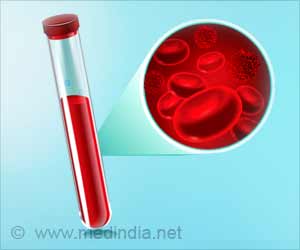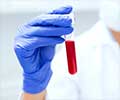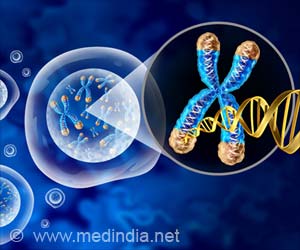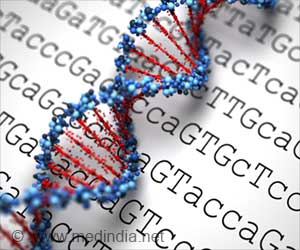Recent advancements in circulating nucleic acids improve non-invasive diagnostics and disease monitoring.
- Circulating nucleic acids (cf-DNA, cf-RNA) aid in early disease detection
- Special tubes ensure stable cf-DNA and cf-RNA for accurate testing
- Key for personalized medicine and disease monitoring
Circulating Nucleic Acids In Plasma And Serum: Recent Developments
Go to source). In addition to their use in the study of diabetes, stroke, and heart disease, oncologists are also using tumor-derived nucleic acids to detect and monitor malignancies. Research on cell-free nucleic acids has advanced, opening the door for liquid biopsies, which allow for customized drug regimens, therapy monitoring, and early illness identification. However, the stability and integrity of cfDNA and cfRNA are critical for accurate analysis, which means that appropriate handling, storage, and collection are necessary for precise results.
TOP INSIGHT
Did You Know?
Circulating nucleic acids, like cfDNA and cfRNA, serve as non-invasive biomarkers for cancer, prenatal screening, and organ transplant monitoring. #liquidbiopsy #diagnostictesting #medindia
Next-Gen Collection for Cell-Free DNA & RNA
The cf-DNA/cf-RNA Preservative Tubes are made by Norgen Biotek especially to preserve cfDNA, circulating tumor DNA (ctDNA), and cfRNA. Together with preserved circulating tumor cells, the novel tube design enables genetic materials to survive for thirty days at room temperature and eight days at 37°C.These customized tubes offer superior blood cell protection, allowing for the recovery of pure plasma suitable for testing technologies such as Polymerase Chain Reaction(PCR), Quantitative Polymerase Chain Reaction(qPCR), and Next-Generation Sequencing(NGS). These tubes play a vital role in scientific and medical applications due to their enhanced efficiency in extracting DNA and RNA, leading to greater accuracy in diagnostic techniques and research outcomes (2✔ ✔Trusted Source
cf-DNA/cf-RNA Preservative Tubes For Whole Blood Collection
Go to source).
Decoding the Role of Cell-Free DNA and RNA
- Origins and Nature: cfDNA and cfRNA enter the bloodstream by active secretion by living cells, necrosis (uncontrolled cell death), and apoptosis (planned cell death).
- The significance of diagnosis: They serve as non-invasive biomarkers of organ transplant rejection, monitoring, detection of prenatal abnormalities, and cancer diagnosis.
- Developments in Liquid Biopsies: The ability to detect and analyze cfDNA and cfRNA has revolutionized liquid biopsy—a minimally invasive technique that enables early disease detection through a simple blood test.
Disease Detection & Diagnosis
Important biomarkers for detecting and tracking a range of illnesses are these circulating nucleic acids:- Cancer Detection: Because tumor-derived cfDNA has mutations specific to cancer cells, it can be used to track the progression of tumors and detect them early without invasive biopsy.
- Prenatal Screening: Non-invasive prenatal testing (NIPT) is made possible by fetal cfDNA in maternal blood, and it can identify chromosomal abnormalities like Down syndrome.
- Organ Transplant Monitoring: cfDNA from a transplanted organ can help physicians modify immuno-suppressive drugs and identify early rejection.
- Other diseases and neurological disorders: According to research, cfRNA, which shows cellular activity in real time, may provide insight into neurological conditions as well as other illnesses like Alzheimer's, autoimmune diseases, and stroke.
Liquid Biopsy: The Future of Non-Invasive Diagnostics
The capacity to analyze cfDNA and cfRNA has accelerated the development of liquid biopsy, a cutting-edge technique that uses a simple blood test to identify disease. In contrast to conventional biopsies, which necessitate the intrusive removal of tissue.
Real-time monitoring and early detection of disease
Liquid biopsy can detect the traces of cfDNA and cfRNA released by cancer cells, but current diagnostic methods only detect issues after they have advanced. Cancer patients are more benefited from frequent blood testing because they can detect new genetic changes and evaluate the impact of treatment. This strategy should be used to modify medication as soon as patients show signs of drug resistance or disease recurrence.
Minimally invasive techniques with lower hazards
The procedure of conducting traditional tissue biopsies often requires surgical access , causes pain and safety risks while limiting repetition. A minimally invasive, painless blood draw is all that is needed for the liquid biopsy technique.
Personalized treatment strategies using molecular profiling
The groundbreaking potential of liquid biopsy is enabled by advanced precision medicine technologies that tailor treatment plans to an individual's genetic profile,
- Identifying specific gene mutations, delivering targeted therapies.
- Drug resistance detection,thereby modifying treatment strategies.
- Personalized Prenatal Care, which helps parents make better decisions based on the genetic profile of the unborn child.
"Circulating Antibodies Nature’s Smart Detectives for Defense and Diagnosis"
References:
- Circulating Nucleic Acids In Plasma And Serum: Recent Developments - (https://pubmed.ncbi.nlm.nih.gov/17108186/)
- cf-DNA/cf-RNA Preservative Tubes For Whole Blood Collection - (https://www.news-medical.net/cf-DNAcf-RNA-Preservative-Tubes-for-Whole-Blood-Collection)
Source-Medindia
 MEDINDIA
MEDINDIA





 Email
Email




